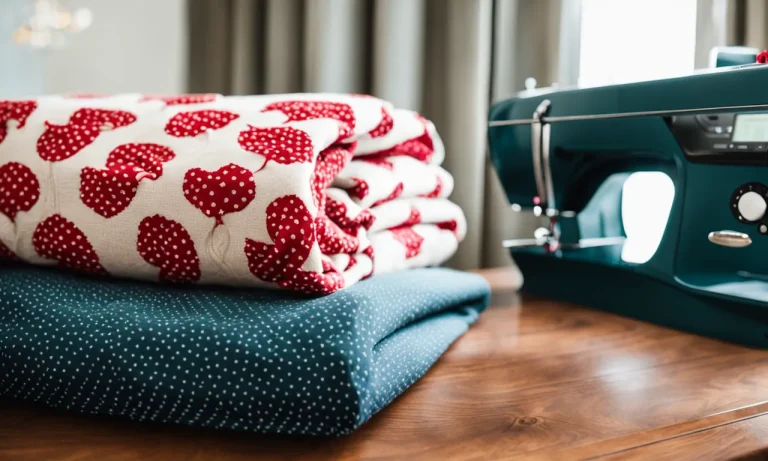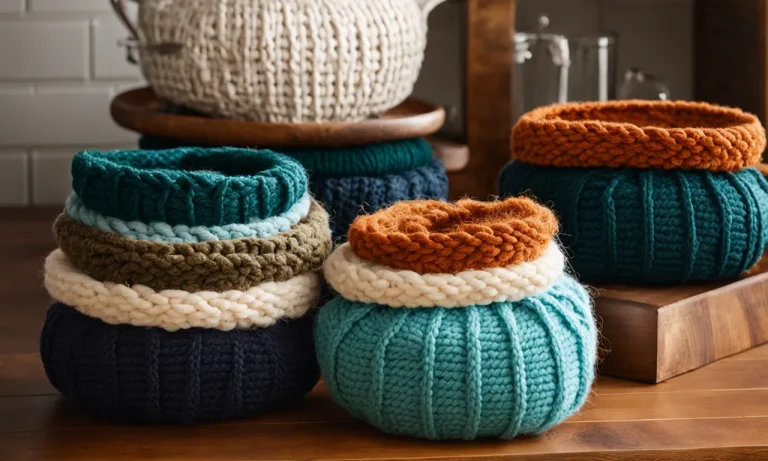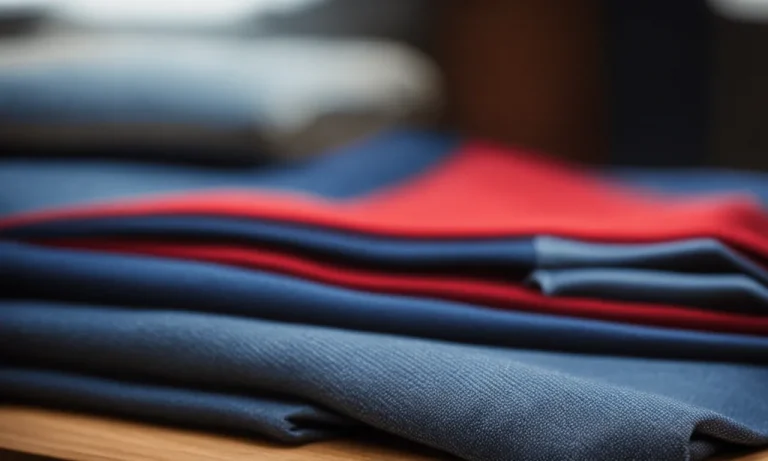Can You Put Fabric Softener In The Bleach Dispenser?
Doing laundry can be a tedious chore with many steps, so it’s understandable if you’re looking for shortcuts or ways to streamline the process. You may be wondering if you can cut corners by putting fabric softener in the bleach dispenser instead of the designated fabric softener dispenser or compartment.
While it may seem harmless, this shortcut comes with some risks and downsides. In this comprehensive guide, we’ll provide a clear answer on whether or not you should put fabric softener in the bleach dispenser, explain the pros and cons, and offer safer alternative options.
If you’re short on time, here’s a quick answer: you should avoid putting fabric softener in the bleach dispenser. The chemicals in fabric softener can gunk up and clog the bleach dispenser over time. It’s better to add fabric softener to the correct dispenser or dilute it and add it directly in the wash. Read on as we dive deeper into the details.
The Purpose of Bleach and Fabric Softener Dispensers
Bleach dispenser function
The bleach dispenser in a washing machine is specifically designed to hold and dispense bleach during the wash cycle. Bleach is a powerful cleaning agent that helps remove stains, disinfects fabrics, and brightens whites. It is commonly used to remove tough stains like grass, blood, or wine.
Pouring bleach directly onto clothes can cause damage, fading, or discoloration. The bleach dispenser ensures that the bleach is evenly distributed throughout the wash, preventing any potential harm to the fabric.
Fabric softener dispenser function
The fabric softener dispenser, on the other hand, is meant to hold and release fabric softener during the rinse cycle. Fabric softeners are designed to make clothes feel softer, reduce static cling, and add a pleasant scent.
They work by coating the fibers of the fabric, making them smoother and more flexible. This helps reduce friction between the clothes, resulting in less wrinkles and easier ironing. Using a fabric softener dispenser ensures that the softener is evenly distributed and properly diluted, preventing any staining or damage to the fabric.
Why separating them matters
It is important to separate bleach and fabric softener because they have different functions and should not be mixed together. Bleach is a powerful oxidizing agent and can react with the components of fabric softeners, reducing their effectiveness.
Mixing bleach and fabric softener can also result in chemical reactions that produce harmful fumes. Additionally, fabric softeners may contain oils or waxes that can leave a residue on the bleach dispenser, potentially causing clogs or malfunctioning.
By using the designated bleach and fabric softener dispensers, you can ensure that each product is used as intended, maximizing their benefits and avoiding any potential damage to your clothes or washing machine.
It is always advisable to consult your washing machine’s manual for specific instructions on how to use the dispensers correctly.
For more information on laundry tips and best practices, you can visit www.thespruce.com or www.consumerreports.org.
Risks of Putting Fabric Softener in the Bleach Dispenser
Residue buildup and clogging
Putting fabric softener in the bleach dispenser can lead to potential issues such as residue buildup and clogging. Fabric softeners are designed to be used in the designated fabric softener compartment of your washing machine.
When poured into the bleach dispenser, the fabric softener may not properly dissolve, resulting in residue that can accumulate over time. This residue can clog the dispenser and affect its functionality, leading to potential malfunctions and costly repairs.
Fabric softener spreading unevenly
Another risk of putting fabric softener in the bleach dispenser is that it may not distribute evenly during the wash cycle. The bleach dispenser is specifically designed for bleach, which has different properties compared to fabric softener.
By pouring fabric softener into the bleach dispenser, there is a high chance that it will not mix properly with the water and detergent, leading to uneven distribution throughout the load. This can result in some clothes receiving too much fabric softener, while others may not receive any at all.
Fabric damage over time
Using the bleach dispenser for fabric softener can also lead to potential fabric damage over time. Fabric softeners contain chemicals that are meant to soften and condition fabrics. However, if not used properly, these chemicals can cause fabric fibers to break down, resulting in premature wear and tear.
By using the designated fabric softener compartment, you can ensure that the fabric softener is diluted properly and applied evenly, reducing the risk of fabric damage.
Voiding your washing machine warranty
Using the bleach dispenser for fabric softener may void your washing machine warranty. Most washing machine manufacturers specifically state in their manuals that fabric softener should only be used in the designated fabric softener compartment.
By deviating from these instructions and using the bleach dispenser for fabric softener, you may be violating the terms of your warranty. In the event of any issues or malfunctions, the manufacturer may refuse to provide warranty coverage, leaving you responsible for any repair or replacement costs.
It is important to follow the manufacturer’s instructions and guidelines for using fabric softeners in your washing machine. By using the designated fabric softener compartment, you can avoid the risks associated with putting fabric softener in the bleach dispenser and ensure that your washing machine continues to function properly.
When You Can Use the Bleach Dispenser for Fabric Softener
Many modern washing machines come equipped with a bleach dispenser, which is a compartment specifically designed for adding bleach during the wash cycle. But can you put fabric softener in the bleach dispenser? The answer is yes, but with some considerations.
For washing machines without fabric softener dispensers
If your washing machine doesn’t have a dedicated fabric softener dispenser, the bleach dispenser can be a convenient alternative. Simply pour the fabric softener into the bleach dispenser before starting the wash cycle.
The fabric softener will be released at the appropriate time, ensuring that your laundry comes out soft and fresh.
Pro tip: To prevent any potential fabric softener stains, it’s a good idea to dilute the liquid fabric softener with water before adding it to the bleach dispenser. This will help the fabric softener mix more evenly with the water in the washing machine, reducing the chances of any undiluted fabric softener coming into direct contact with your clothes.
Diluting liquid fabric softener before adding to bleach dispenser
Diluting liquid fabric softener is a simple process. Just mix equal parts of fabric softener and water in a separate container, and then add this diluted mixture to the bleach dispenser. This will ensure that the fabric softener is evenly distributed throughout the wash cycle, providing the desired softness and fragrance to your clothes.
Did you know? According to a study conducted by Laundry Care, liquid fabric softener tends to be more effective in reducing static cling compared to dryer sheets. So using liquid fabric softener in your wash cycle can help you achieve static-free clothes.
Using dryer sheets instead of liquid fabric softener
If you prefer not to use liquid fabric softener or don’t have a bleach dispenser, another alternative is to use dryer sheets. These sheets are added to the dryer along with your laundry and provide the same fabric softening benefits.
Simply toss a dryer sheet into the dryer, and let it work its magic.
Fun fact: Dryer sheets not only soften your clothes, but they can also help reduce static, remove wrinkles, and add a pleasant fragrance to your laundry.
Safer Alternatives to Putting Fabric Softener in Bleach Dispenser
Many people wonder if they can put fabric softener in the bleach dispenser of their washing machine. While it may seem convenient, it is not recommended as it can cause clogs and damage the dispenser. Here are some safer alternatives to consider:
Add during rinse cycle directly
One alternative is to add fabric softener during the rinse cycle directly. Most washing machines have a designated compartment for fabric softener that releases it at the right time. This ensures that the fabric softener is distributed evenly and doesn’t cause any clogs or damage.
Simply follow the instructions on the fabric softener bottle for the appropriate amount to use.
Use dryer balls or sheets in the dryer instead
If you prefer the softness and freshness that fabric softener provides, consider using dryer balls or sheets in the dryer instead. Dryer balls are typically made of rubber or wool and help to soften clothes by creating agitation.
Dryer sheets, on the other hand, are infused with fabric softener and release it as the clothes tumble. Both options are safe and effective alternatives to using fabric softener in the bleach dispenser.
Skip the fabric softener altogether
Another option to consider is skipping fabric softener altogether. While fabric softener can make clothes feel softer and smell nice, it is not necessary for clean and fresh laundry. By properly sorting and drying your clothes, you can achieve similar results without the use of fabric softener.
Sorting clothes by fabric type and using the appropriate wash and dry settings can help minimize static and maintain the softness of your clothes.
Remember, always consult your washing machine’s manual and follow the manufacturer’s instructions for the proper use and care of your appliance.
For more information on laundry tips and tricks, you can visit The Spruce, a trusted source for home and cleaning advice.
Conclusion
To summarize, it’s best to avoid putting liquid fabric softener into your washing machine’s bleach dispenser. While it may seem harmless, over time the fabric softener chemicals can build up and clog the dispenser.
For best results, use the designated fabric softener dispenser or compartment if your machine has one. If not, try diluting and adding softener directly in the wash. There are also safer alternatives like dryer balls, sheets, or skipping softener altogether.
Following manufacturer instructions will keep your washer running smoothly for years to come.







